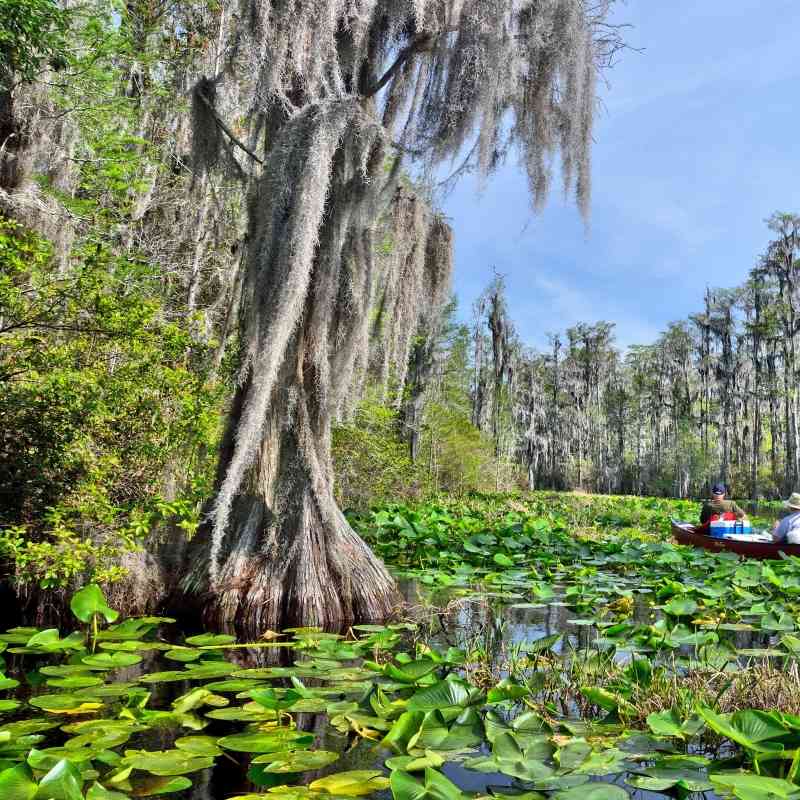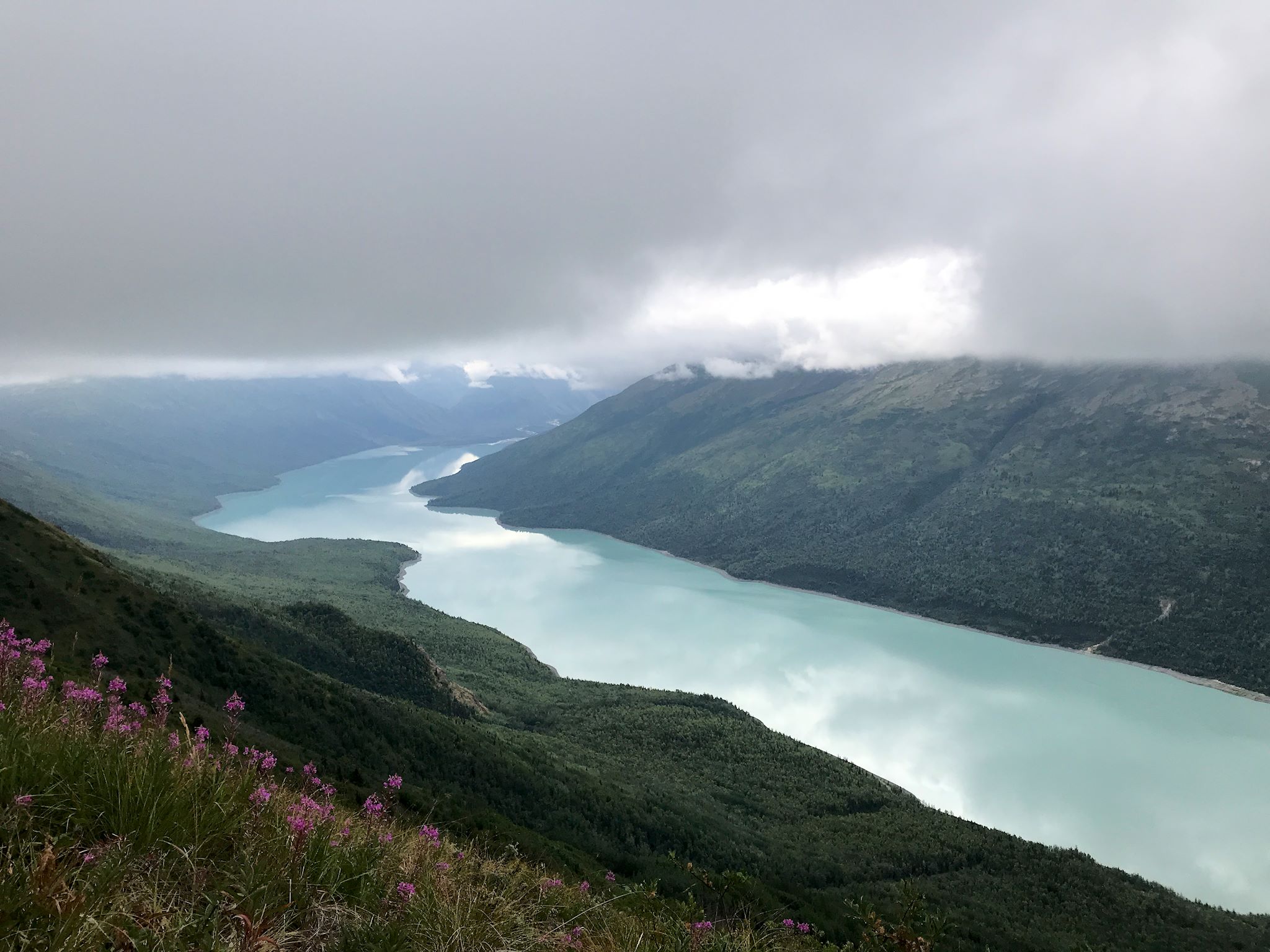Exploring the world of the Eastern Hellbender Salamander
For those of us who live in the mountains of Western North Carolina, there are few things more refreshing on a hot summer day than a cool dip into a crystal clear mountain stream. These cold water streams are more than just a refuge for a sun-soaked tourist or an overheated hiker. They are the life blood of our mountains and support a dizzying array of wildlife. From fish, amphibians, mussels, insects, crayfish and more, these aquatic habitats are home to some of the largest collections of living organisms of their kind.
Cascading over ancient rocks, these waters support many unique animals, some of which might surprise you. As anglers maneuver their tackle across the water, or as relaxed explorers float down the river on neon inner-tubes, a giant sleeps. As kids and campers splash in wading pools, and as hikers ford the river, two tiny eyes peek out from beneath slabs of rock. As all these people come and go, the largest salamander in North America slumbers in its submerged world beneath the waves and ripples.
(story continues below)
With names like hellbender, snot otter, crampus, or even “old lasagna sides,” it might be hard to know what to expect of these cryptic animals, but hellbenders are fascinating critters. A fully aquatic salamander, this ancient giant cruises the river bed at night in search of its favorite prey: crayfish. With large mouths, these animals ambush prey with a swift gulp, and crush it with their powerful jaws. Despite this dramatic feeding behavior, hellbenders are no threat. As far as we know, they rarely prey on fish, and they certainly won’t take a nibble at the occasional wader’s toes. They are reclusive and shy creatures that play an important role in keeping the ecological balance of our mountain streams intact. Since crayfish eat fish eggs, too many crayfish in one stream can reduce fish populations. By feeding on crayfish, hellbenders keep their numbers to a manageable level for the stream to support, and keep the fish populations healthy.
Reaching lengths of up to two feet, it seems impossible that hellbenders are seldom noticed. How can a beast of such proportions go unseen? The answer is both simple and sad. After a century of having their home waters polluted and trapped behind dams, these animals have become exceedingly rare. Like all amphibians, hellbenders are sensitive to chemical pollution. Before passage of the Clean Water Act, untold proportions of industrial chemicals were released into streams and rivers, sparing only the inaccessible and undeveloped waterways. Dams and other man-made impediments have cut off hellbenders from miles and miles of suitable habitat. These obstacles also keep the fragmented populations from reaching one another. And on top of these dangers, the most insidious threat to hellbenders in their few remaining habitats is sediment.
Hellbenders nest underneath large rocks, and males vigorously defend these rocks after females deposit their eggs. While the male’s defense is great at repelling other suitors and would-be predators, their aggressive posture is no match for the silt and mud that washes into the water when stream banks are disturbed. Runoff carrying fine particulate matter can disrupt important stages of the hellbender’s life cycle. Sediment settles in the stream bed, suffocating the eggs and cutting off the next generation of hellbenders before they have a chance to hatch. A threat like this puts the giant salamander’s survival at risk.

There are those that are fighting for the hellbender’s survival as vigorously as these animals fight to defend their nests. A broad coalition of state, federal, and community partners have been working feverishly over the past decade to document all of the known populations of hellbenders in western North Carolina and beyond. Searching every stream and every rock, biologists and volunteers have documented where hellbenders are located and studied their habitats, learning more and more about their ecology and what it will take to protect this species.
At Defenders of Wildlife, we are working with this coalition of partners on several fronts to help protect the eastern hellbender and bring it back to more of its native range. A big part of this is in protecting the areas around hellbender habitat – the forests, parks and other lands that need to remain healthy and intact for the waters to be the same. Much of this area is public land, such as national forests, which gives us the opportunity to weigh in on how they are managed, ensure these lands remain protected, and new measures are put in place to reduce pollution. We are working with agencies and partners on collaborative efforts to protect habitats and perform much-needed research about the species.
Protecting habitat and gathering more data will be a huge help for hellbenders in the long run, but we’re also working on the ground now. With our partners, we’re developing innovative solutions to help monitor hellbender populations and expand their range, like using artificial nest boxes to provide additional breeding habitats. Just as you would install a bat or blue bird box in your yard, these constructed habitats can help populations rebound.
Hellbenders are an emblematic species of the southern Appalachians, and one we can all take pride in. So the next time you fish a stream or wade in a pool to cool off, remember that you could be swimming with giants.
Author

Ben Prater
comments



